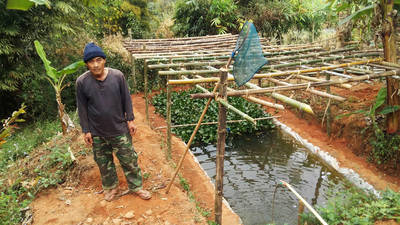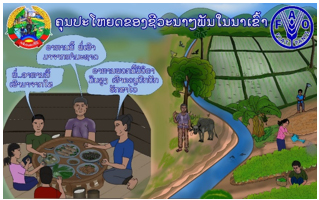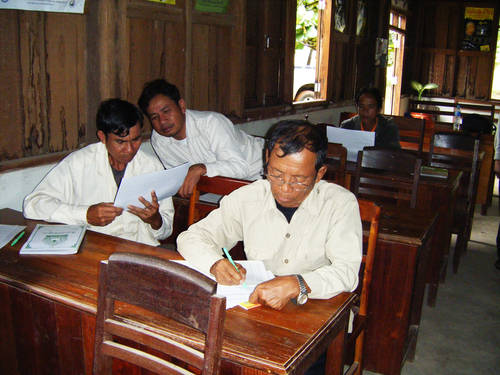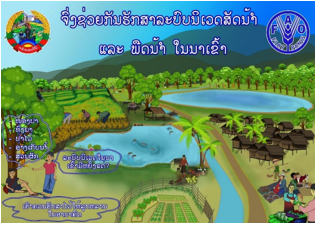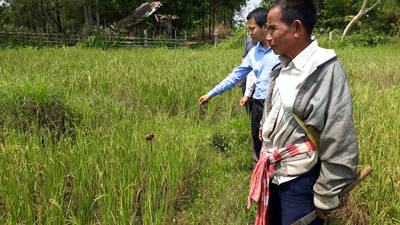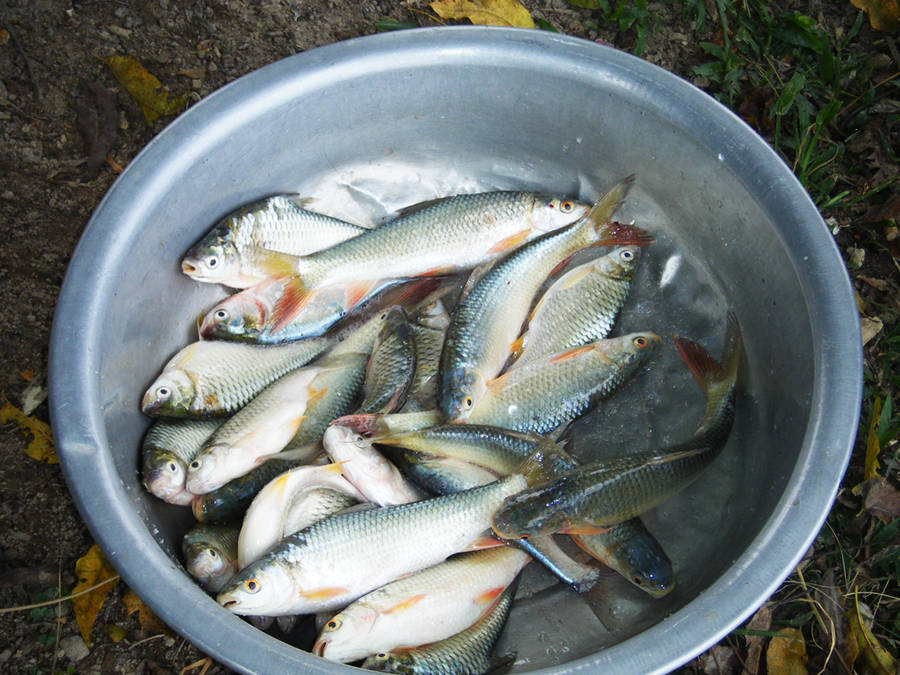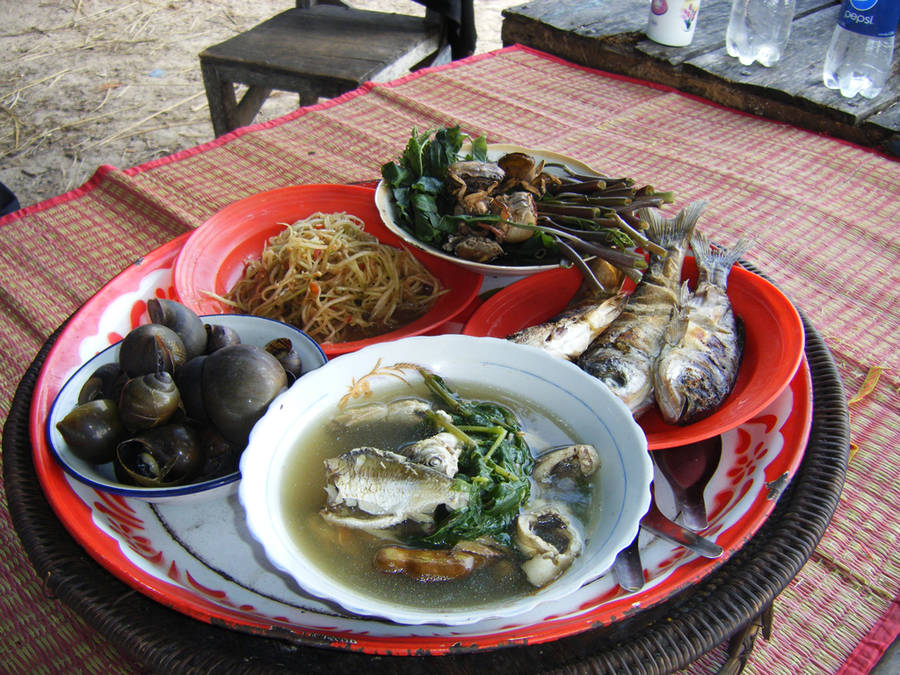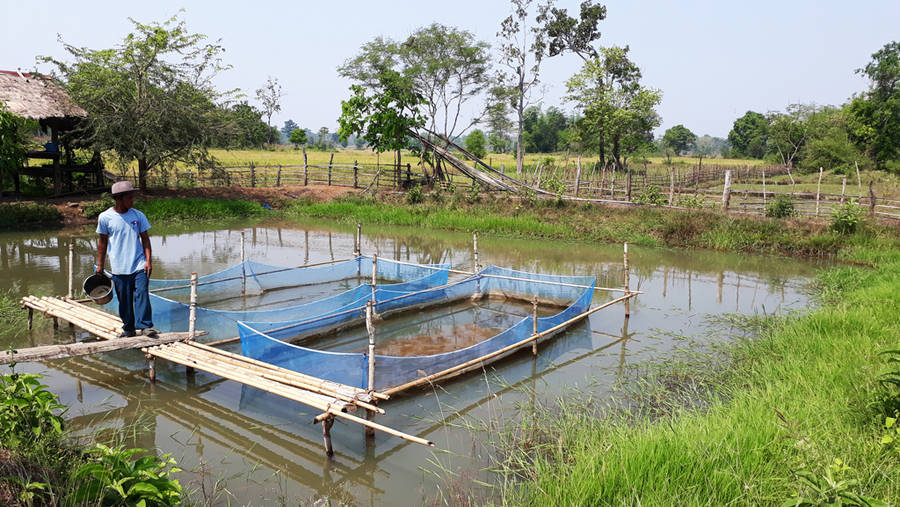FAO: Strengthening integrated aquatic plant and animal farming in the rice fields of Lao PDR
- An FAO project helped farmers in rural areas of LAO PDR to expand their rice-fish-aquatic animal production
Lao PDR enjoys a rich aquatic biodiversity, with rice fields acting as an environment that is home to an impressive diversity of aquatic organisms. The aquatic animals and plants that thrive in these rice fields are key to the nutritional and food security needs of Lao’s people, particularly in rural areas. Aquatic animals present in these rice fields and consumed by the local people include not only fish, but also frogs, eels, snails, crabs and aquatic insects.
Studies conducted over the past decade consistently illustrate that the wide array of food produced in these rice fields are key sources of animal protein and micronutrients for many rural dwellers, and especially important to meet the nutritional requirements and development needs of pregnant women and children.
One study in Lao PDR’s Savannakhet Province illustrated that some families’ daily consumption reached three kilogrammes of aquatic animals and plants harvested each day from their rice fields. The data from this study also showed that aquatic animals such as frogs, snails, shrimps, crabs and insects are as important to local food security as the fish also harvested from the ponds. Even though harvesting of these aquatic animals is highest during the rainy season, through various methods of preservation, these resources continue to make an important contribution to rural families’ food security throughout the year.
Nevertheless, these studies also indicated that knowledge was lacking among rural farmers in Lao PDR that would allow them to more fully develop the potential of these rice paddies to farm aquatic animals. And intensification of these rice-fish fields can be financially and technically out of reach for many of these rural communities.
Alternate strategies that are more in keeping with the capabilities and available resources of these rural communities also exist, and FAO began working with extension officers and pilot communities to strengthen technical understanding of how to intensify these integrated farming and fish farming techniques in a sustainable manner in these communities.
One of the aquaculture-agriculture strategies developed by farmers working on these pilot projects included the construction of a small, plastic-lined earth pond that can be built locally. These crafted ponds can be used by farmers to intensify segments of their rice-fish culture system. The pond is small enough to be dug by hand, yet not large enough to grow substantial quantities of fish. It primarily allows farmers to nurse seed fish that can be used as a source of food during dry seasons when food is often scarce in these communities.
“In this project we learn together and government extension officers help us and learn with us,” according to Mr Khankham Phothisan, Village Head of Savannakhet Province. “We find what works best in our village. We talk together, and this gives us confidence to try new ideas. Before I wasn’t sure where to start, but now I want to develop my fish farming every year. It is not difficult and many other people in the village are interested and ask me questions – they want to grow fish for their families to eat. I want to learn more [about aquaculture] and I want the government extension officers to help me.”
Most of the farmers participating in these trials produced fish seed (young tilapia), which are primarily used for stocking rice fields and small ponds, but some of those were sold to other farmers. During 2016, 28 families produced a total of 68 000 seed fish. In 2017, 30 families produced a total of 102 000 seed fish. The limited availability of seed fish is a major constraint to the development of aquaculture and rice-fish culture in Lao PDR, so the community contributes towards sustainable, integrated agriculture-aquaculture systems.
And farmers are enthusiastic about their experience working alongside FAO and national extension officers to improve and intensify their agriculture-aquaculture farmlands, “Working with this project has given me more confidence to try new farming activities and better use resources on my farm,” according to Mr Bounlom Phanthavong of Savannakhet Province. “Before, I didn’t know where to start to make my rice fields more productive. Now I am selling small seed fish to other farmers and many people come to see me to ask questions [about rice-fish farming]. I want to teach other farmers and help them develop their rice fields”.
Another rice-fish farmer, Ms Sulimok of Xieng Khouang Province, expressed her enthusiasm for training, saying, “Starting with a small plastic [lined] pond, gave me the confidence to develop fish farming in my rice fields. Now my family has plenty of fish to eat every day and we sell fish to other people in the village. Many people think farming fish is difficult and expensive, but it is not, and you can use cheap feeds [inputs], like waste vegetables and cow manure, and the fish eat in the rice fields. Now I want to build more fish ponds and become an example for others.”
FAO has been very pleased with the results of this pilot project. “This pilot project was developed in a participatory manner, not for farmers but with farmers,” explained Matthias Halwart, FAO Acting Aquaculture Branch Head. “It is based on FAO’s partnering with farming communities and the agricultural extension services at provincial and district level over many years, and shows how small, innovative interventions that are well within farmers’ technical and financial capabilities can lead to enhanced food and nutrition security in rural communities in Lao PDR.”
“We are confident that this work with our Laotian partners towards more efficient use of resources will improve the lives of vulnerable farming communities, and up-scaling of these promising results to reach more people will also help the country delivering against relevant SDG goals and targets. “

